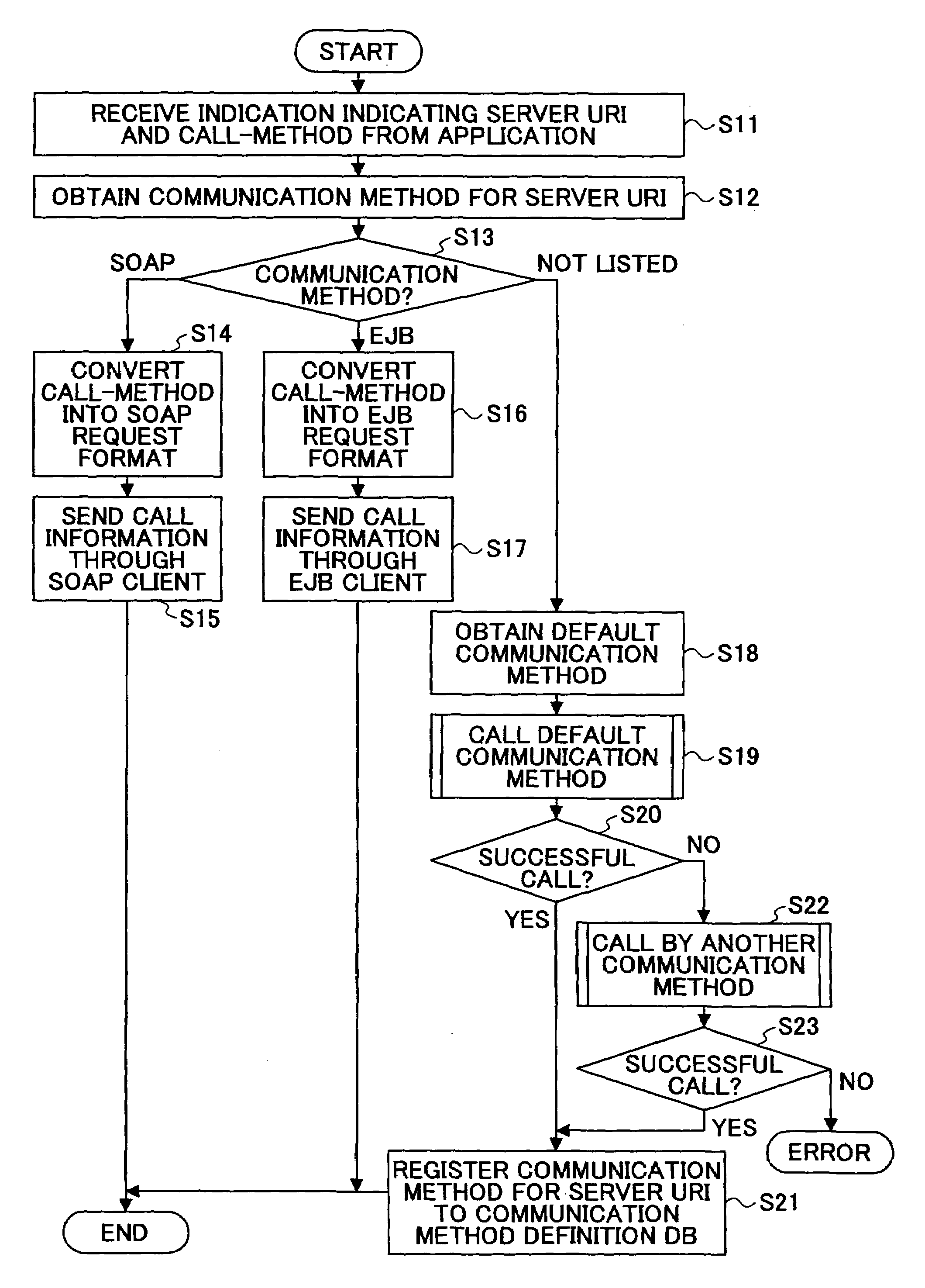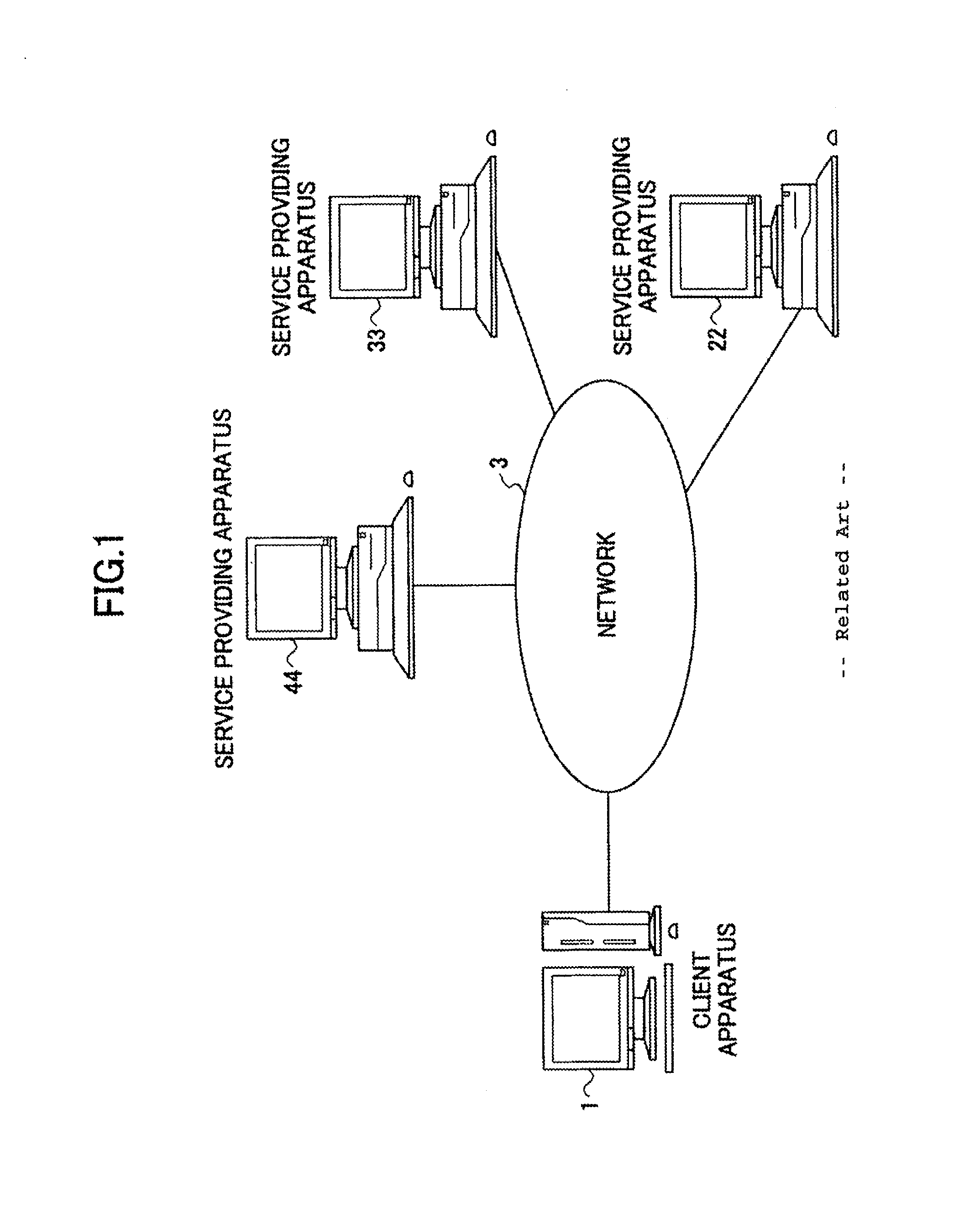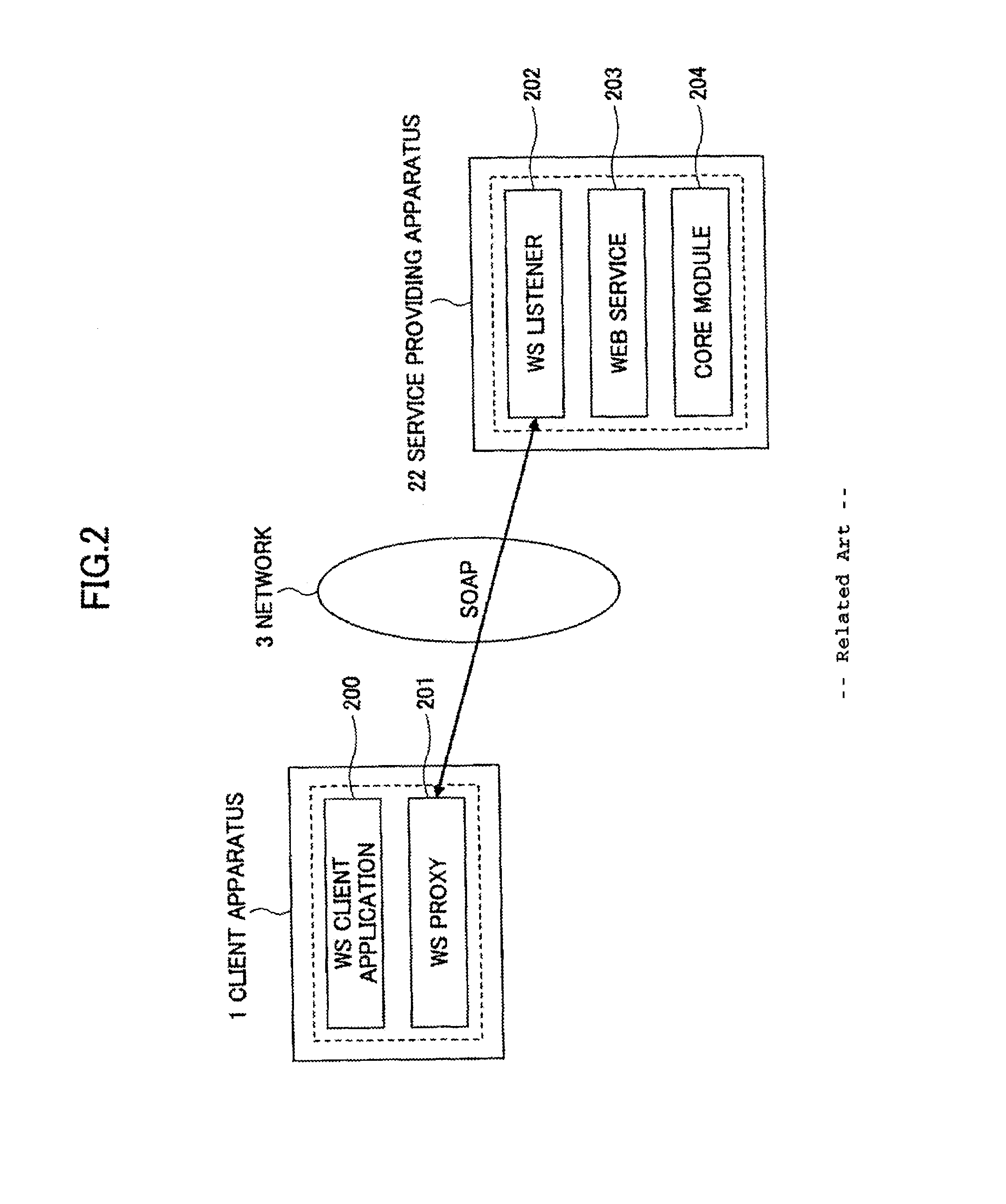Communication method selection for exchanging information between service requester and service provider
a technology for exchanging information and service requesters, applied in the direction of multi-programming arrangements, program control, instruments, etc., can solve problems such as large overhead, degraded, and ineffective data conversion and communication processes
- Summary
- Abstract
- Description
- Claims
- Application Information
AI Technical Summary
Benefits of technology
Problems solved by technology
Method used
Image
Examples
first embodiment
[0034]FIG. 3 shows hardware configurations of a client apparatus 1a and service providing apparatuses 22a, 33a, and 44a. The client apparatus 1a and the service providing apparatuses 22, 33, and 44 are PCs (Personal Computers) as well-known hardware. That is, the client apparatus 1a includes a CPU (Central Processing Unit) 11, a ROM (Read-Only Memory) 12, a RAM (Random Access Memory) 13, a hard disk drive (HDD) 14, a network I / F (Interface) 15, and a drive unit 16, which are mutually connected. The client apparatus 1a also connects to a network 3a through the network I / F 15. By installing various application programs to the HDD 14 and causing the CPU 11 to execute the application programs, the client apparatus 1a can achieve various functions. When the various application programs are installed to the HDD 14, a recording medium 17 can be used to install the various application programs to the HDD 14 through the drive unit 16. Programs recorded in the recording medium 17 are client m...
second embodiment
[0050]In the following, a second embodiment will be described with reference to FIG. 5 and FIG. 6. In FIG. 5 and FIG. 6, hardware configurations of a client apparatus 1b and service providing apparatuses 22b, 33b, and 44b are the same as the hardware configuration of the client apparatus 1a and the service providing apparatuses 22a, 33a, and 44b in the first embodiment, and explanations thereof will be omitted. The client apparatus 1b is connected to the service providing apparatuses 22b, 33b, and 44b through a network 3b. The service providing apparatuses 22b, 33b, and 44b correspond to the service providing apparatuses 22a, 33a, and 44a in the first embodiment, and each of service providing apparatuses 22b, 33b, and 44b includes a WS listener 506, a Web service 507, and a core module 508, which correspond to the WS listener 406, the Web service 407, and the core module 408 in the first embodiment, respectively. The client apparatus 1b includes mainly a client module 10b and a serv...
third embodiment
[0057]FIG. 7 is a diagram showing software configurations of a client apparatus and a service providing apparatus according to a third embodiment of the present invention.
[0058]In FIG. 7, a client apparatus 1c includes an application 600, a remote client wrapper 601, a SOAP client 602, an EJB client 603, and a communication method definition DB 604. The application 600, the remote client wrapper 601, and the SOAP client 602 correspond to the WS client application 500, the WS proxy wrapper 501, and the WS proxy 502 in the second embodiment, respectively. A service providing apparatus 22c includes a SOAP interface 605, an EJB interface 606, and a core module 607. The client apparatus 1c connects to the service providing apparatus 22c. That is, the application 600 realizes a function as an application by utilizing a service provided by the core module 607. In this case, the application 600 does not call the core module 607 directly. Instead, the application 600 indirectly calls the cor...
PUM
 Login to View More
Login to View More Abstract
Description
Claims
Application Information
 Login to View More
Login to View More - R&D
- Intellectual Property
- Life Sciences
- Materials
- Tech Scout
- Unparalleled Data Quality
- Higher Quality Content
- 60% Fewer Hallucinations
Browse by: Latest US Patents, China's latest patents, Technical Efficacy Thesaurus, Application Domain, Technology Topic, Popular Technical Reports.
© 2025 PatSnap. All rights reserved.Legal|Privacy policy|Modern Slavery Act Transparency Statement|Sitemap|About US| Contact US: help@patsnap.com



